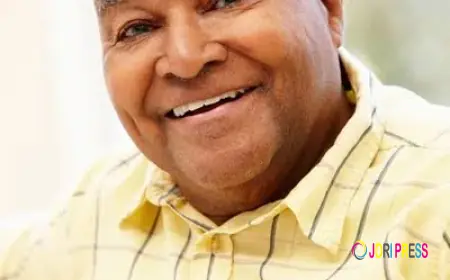10 Common Mistakes to Avoid During Studio Recording

When it comes to studio recording, even experienced musicians and producers can make mistakes that compromise sound quality, creativity, or efficiency. Whether you’re a beginner recording your first song or a professional refining your next album, understanding what to avoid is just as important as knowing what to do. Each misstep in the recording process can cost valuable time, energy, and inspiration. To help you make the most out of every session, here are ten common mistakes to avoid during studio recording and how to prevent them.
1. Skipping Proper Pre-Session Preparation
One of the most frequent errors in studio recording is entering the studio unprepared. Musicians often assume that recording will “fix everything,” but this mindset leads to frustration and wasted studio time. Preparation should start long before your session. Learn your parts thoroughly, rehearse with your bandmates, and finalize your arrangements. Ensure lyrics, melodies, and transitions are solid. Musicians who come in unprepared often spend hours troubleshooting issues that should have been resolved during practice. Have a clear vision for what you want to achieve in the session. The studio should be about capturing the best performance, not discovering the song’s structure. Being prepared also allows more time for creativity, experimentation, and refining details that make your studio recording truly shine.
2. Ignoring the Importance of a Good Acoustic Environment
Another critical mistake is underestimating room acoustics. Even the best equipment won’t help if your recording space sounds bad. Room reflections, echoes, and poor sound isolation can all ruin a studio recording. Professional studios invest heavily in acoustic treatment for a reason—it ensures clarity, balance, and precision in every take. If you’re recording at home, don’t ignore this aspect. Simple acoustic panels, diffusers, and bass traps can make a massive difference. Avoid recording in rooms with hard surfaces, such as tiles or glass, as they create unwanted reflections. A well-treated space enhances your sound and reduces the need for heavy post-processing. Neglecting acoustics often leads to muddy, unprofessional recordings that are difficult to fix in mixing. To achieve a high-quality studio recording, always prioritize the room’s sound before hitting record.
3. Using Poor-Quality Equipment or Wrong Microphones
The microphone you choose and how you use it can make or break your studio recording. Using low-quality or inappropriate microphones often leads to thin or harsh tones. Each instrument and vocal type has a suitable mic choice, and knowing which one to use is crucial. Dynamic microphones are excellent for loud instruments like drums and electric guitars, while condenser microphones capture detailed vocals and acoustic instruments. Additionally, microphone placement is as important as the mic itself. Small changes in distance or angle can dramatically alter tone and clarity. Avoid using damaged cables, cheap preamps, or unreliable interfaces, as they introduce noise and distortion. The goal is to capture clean, balanced raw audio that needs minimal correction later. Always test your setup before recording begins. The right equipment, properly configured, ensures your studio recording reaches a professional standard from the start.
4. Neglecting Gain Staging and Levels
One of the most overlooked technical aspects of studio recording is gain staging. Recording with levels that are too high leads to clipping and distortion, while levels that are too low result in noisy, weak tracks. The key is maintaining optimal signal levels throughout the recording chain. Many beginners push input gains too far, thinking louder is better, but digital recording doesn’t work that way. Aim for a balanced level that peaks around -6dB to -3dB, leaving headroom for mixing and mastering. This prevents digital distortion while keeping your sound full and dynamic. Proper gain staging also ensures consistency across multiple takes and instruments. Don’t rely solely on fixing problems later during editing. Once distortion is recorded, it can’t truly be removed. Careful attention to input levels will make your studio recording clean, professional, and easy to mix.
5. Overusing Effects During Recording
It’s tempting to load up your tracks with reverb, delay, or compression while recording. However, one of the biggest mistakes in studio recording is applying too many effects too early. While some light processing can help artists perform better, committing to heavy effects can limit flexibility during mixing. Reverbs or EQ changes that sound good in isolation might clash when all instruments are combined. It’s better to record clean, dry takes whenever possible, then shape the sound during post-production. If you do use effects while recording, keep a dry version as a backup. This allows freedom to adjust the sound later without being stuck with irreversible processing. The best studio recording captures a pure performance that serves as a strong foundation for creative mixing afterward.
6. Failing to Communicate with the Engineer or Producer
A successful studio recording session depends heavily on communication between the artist and the technical team. Many musicians assume engineers automatically know what they want, but that’s rarely true. Failing to clearly express your vision, style, or expectations leads to misalignment and frustration. Before recording begins, discuss details such as tone preferences, desired ambience, and reference tracks. During recording, if something doesn’t sound right, speak up respectfully. Likewise, be open to feedback from your engineer—they often have a trained ear for what works best in the recording space. Miscommunication can lead to wasted time, unnecessary retakes, and unsatisfactory results. Building a collaborative environment ensures everyone works toward the same artistic goal. The most productive studio recording sessions are those where communication flows freely, and every team member understands their role.
7. Overcomplicating the Recording Process
Modern technology offers endless plugins, virtual instruments, and effects, which can easily overwhelm musicians. A common mistake in studio recording is trying to use everything at once. Overcomplicating your setup often leads to confusion, technical issues, and a cluttered sound. Keep your process simple and focused. Start with the essentials: capture great performances with clear sound. Once that foundation is strong, you can layer additional elements carefully. Using too many tools or overproducing your tracks can drain energy and creativity. Simplicity allows for better control, faster workflow, and a more cohesive sound. The best recordings often rely on restraint—knowing when to stop adding and let the music breathe. A clean, well-structured studio recording often outperforms one filled with unnecessary complexity and digital clutter.
8. Rushing Through Takes Without Listening Critically
Many artists rush through multiple takes without taking the time to listen critically between them. This habit wastes potential and leads to inconsistent results. Each take during a studio recording provides valuable feedback on performance, tone, and timing. After every few takes, listen carefully to identify what’s working and what needs improvement. Sometimes small adjustments to technique or emotion can drastically enhance the next performance. Don’t settle for “good enough” when aiming for excellence. Likewise, avoid the opposite extreme of endlessly re-recording out of perfectionism, which can drain creativity. The key is balance—record enough takes to capture the best performance while staying mindful and intentional. Listening critically ensures that your studio recording captures both technical accuracy and emotional authenticity, resulting in tracks that truly connect with listeners.
9. Ignoring File Organization and Backup
Technical discipline is as important as musical skill during. One of the most disastrous mistakes is failing to organize and back up your files properly. Imagine losing an entire session due to a hard drive crash or accidental deletion. Always create structured folders for each project, labeling takes clearly by instrument and date. Use multiple backup systems, such as external drives and cloud storage. Engineers recommend the “3-2-1” rule—three copies of your files, stored on two different media, with one copy kept off-site. Label your tracks logically within your digital audio workstation so that editing and mixing are straightforward. Sloppy organization can waste hours during post-production and even lead to lost work. Professional file management keeps your studio recording workflow efficient, secure, and ready for future revisions or remixes.
10. Forgetting the Human Element
Perhaps the most subtle yet impactful mistake in studio recording is forgetting that music is ultimately about emotion, not perfection. Technology makes it possible to fix timing, pitch, and dynamics with incredible precision, but excessive editing can strip away the soul of a performance. Listeners connect with feeling, vulnerability, and authenticity—not robotic perfection. Don’t be afraid of small imperfections that add character and realism. Encourage expressive performances that capture genuine emotion. Many iconic recordings in history are filled with minor flaws that make them timeless. Balance technical polish with emotional depth. At the end of the day, a perfect take isn’t necessarily the one with flawless notes—it’s the one that feels alive. The essence of a great studio recording lies in capturing that human connection and turning it into sound that moves people.
Building Better Habits for Professional Studio Recording
Avoiding these common mistakes can transform your studio recording process from frustrating to fulfilling. Each tip contributes to building habits that enhance both creativity and technical quality. Preparation ensures efficiency, good acoustics guarantee clarity, and communication fosters collaboration. Paying attention to gain levels, equipment quality, and emotional performance creates recordings that stand the test of time. While technology is a powerful ally, it should serve your artistic vision—not replace it. The goal is not just to record sound but to capture feeling, energy, and authenticity. Musicians who approach studio recording with mindfulness and respect for the craft consistently produce work that resonates with listeners. Learning from these mistakes helps you grow as an artist, refine your workflow, and achieve professional results in every session. In the end, the most successful studio recording is one that captures both the precision of performance and the passion behind the music.
What's Your Reaction?
 Like
0
Like
0
 Dislike
0
Dislike
0
 Love
0
Love
0
 Funny
0
Funny
0
 Angry
0
Angry
0
 Sad
0
Sad
0
 Wow
0
Wow
0














































